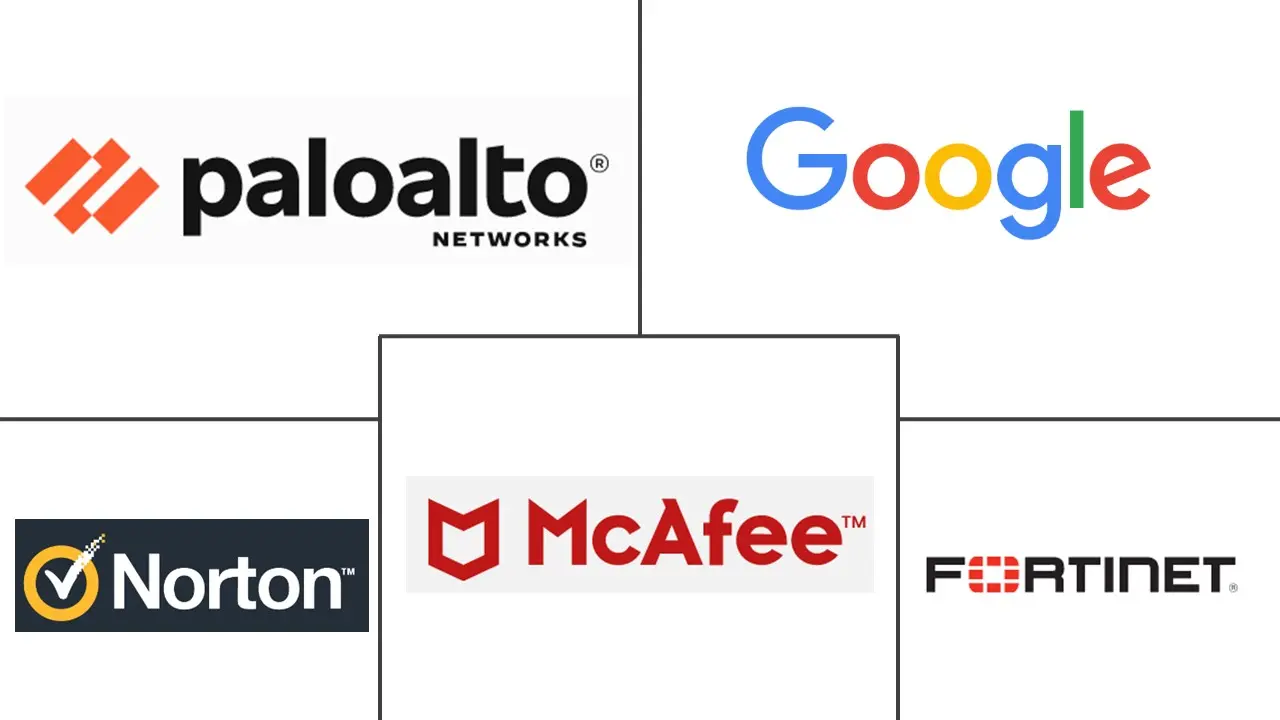Data Exfiltration Market Size and Share
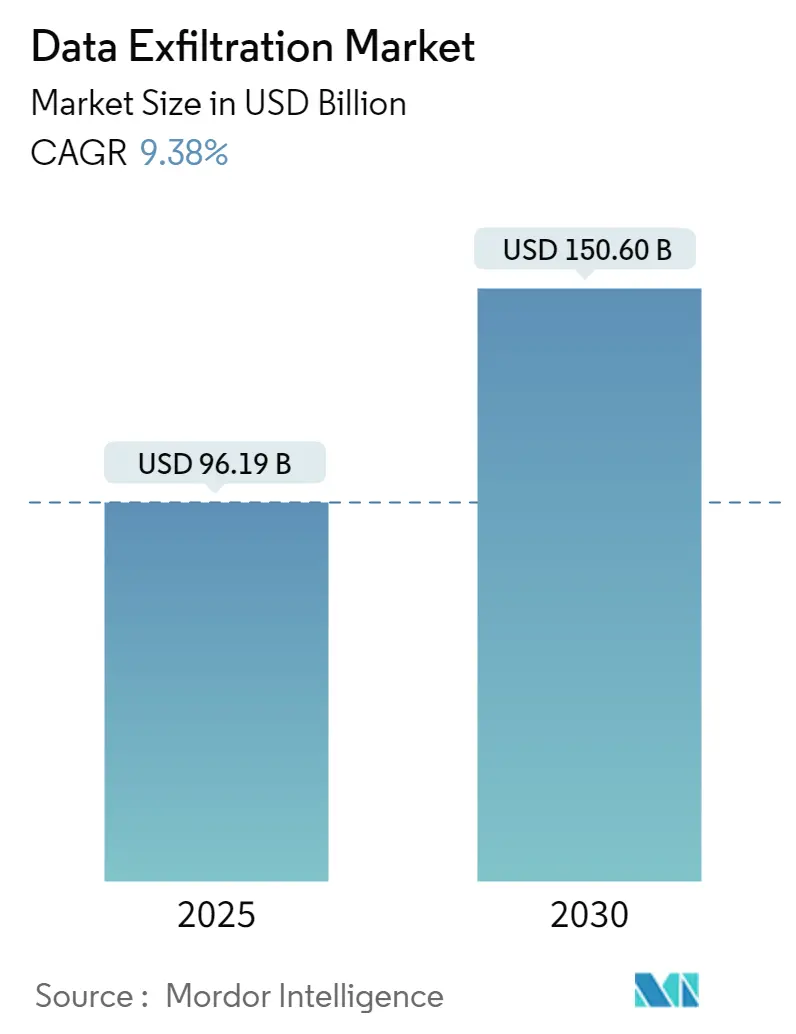
Data Exfiltration Market Analysis by Mordor Intelligence
The Data Exfiltration Market size is estimated at USD 96.19 billion in 2025, and is expected to reach USD 150.60 billion by 2030, at a CAGR of 9.38% during the forecast period (2025-2030).
Data exfiltration is a security breach that occurs when sensitive information from an organization is transferred or copied without authorization from a server or a computer to a location controlled by a threat actor. It is primarily a targeted attack in which the hacker's primary goal is to copy and extract specific information from the data. Hackers directly access the targeted system via remote programs or by installing a portable media device. Personal health information, intellectual property or trade secrets of a firm, personally identifiable information, and financial information, such as credit card or bank details, are all large data breaches.
- The increasing volumes of enterprise data often contain valuable assets such as customer information, intellectual property, trade secrets, financial records, and other sensitive data. This makes organizations attractive targets for data exfiltration attacks. Protecting these valuable assets drives the demand for advanced prevention solutions.
- Strict regulatory requirements for data protection play a crucial role in driving the need for data exfiltration prevention. Various data protection regulations, such as the General Data Protection Regulation (GDPR), California Consumer Privacy Act (CCPA), and other regional or industry-specific regulations, mandate organizations to implement measures to protect sensitive data from unauthorized access, including data exfiltration. Compliance with these regulations is crucial to avoid legal penalties, reputational damage, and loss of customer trust.
- Increasing data loss incidents in the on-premises environment can drive the need for data exfiltration prevention. On-premises environments may have complex and interconnected IT systems, which can introduce vulnerabilities. Malicious actors can exploit these vulnerabilities to gain unauthorized access and exfiltrate sensitive data. The increasing data loss incidents in on-premises environments highlight the need for robust data exfiltration prevention solutions to protect against such threats.
- Compatibility issues between on-premises applications and the cloud environment can pose challenges and restrain the data exfiltration prevention market. Ensuring comprehensive data visibility and monitoring in a hybrid environment where on-premises applications interact with cloud services can be challenging. Data exfiltration prevention solutions often rely on monitoring network traffic, user behavior, and data access patterns to detect and prevent unauthorized data transfers. However, compatibility issues may hinder seamless monitoring across on-premises and cloud environments, limiting the effectiveness of data exfiltration prevention measures.
- The COVID-19 pandemic significantly impacted various aspects of the cybersecurity landscape, including the data exfiltration market. With the increased adoption of remote work during the pandemic, organizations rapidly adjusted their IT infrastructure and security measures. This sudden shift introduced new vulnerabilities and challenges, as remote work environments were expected to have different security controls than traditional on-premises setups. Attackers exploited these vulnerabilities to target remote workers and gain unauthorized access to sensitive data, increasing the risk of data exfiltration.
Global Data Exfiltration Market Trends and Insights
Healthcare and Life Sciences End User Segment is Expected to Hold Significant Market Share
- Data exfiltration is a significant concern in the healthcare and life sciences industry due to the sensitive nature of the data involved, such as patient medical records, clinical trial data, intellectual property, and proprietary research. Unauthorized access to this data can lead to severe consequences, including patient privacy breaches, reputational damage, regulatory non-compliance, and compromised research and development efforts.
- Protecting patient data is a top priority in the healthcare industry. Personal health information (PHI) and electronic health records (EHRs) contain highly sensitive information and are attractive targets for cybercriminals. Data breaches in healthcare can result in identity theft, insurance fraud, and other serious consequences for patients.
- Increasing ransomware attacks can directly impact the prevalence and scale of data exfiltration incidents. According to IC3 and FBI, In 2022, the U.S. Internet Crime Complaint Center (IC3) received 210 complaints indicating ransomware attacks on healthcare organizations globally.
- The healthcare industry is subject to various regulations and data protection standards, including the Health Insurance Portability and Accountability Act (HIPAA) in the United States and the General Data Protection Regulation (GDPR) in the European Union. These regulations mandate strict controls and protocols for safeguarding patient data, including measures to prevent data exfiltration.
- The healthcare and life sciences industry faces a diverse range of cyber threats. These include ransomware attacks, phishing attempts, social engineering, malware infections, and insider threats. Threat actors may target healthcare organizations to steal valuable data, disrupt operations, or extort ransom payments.
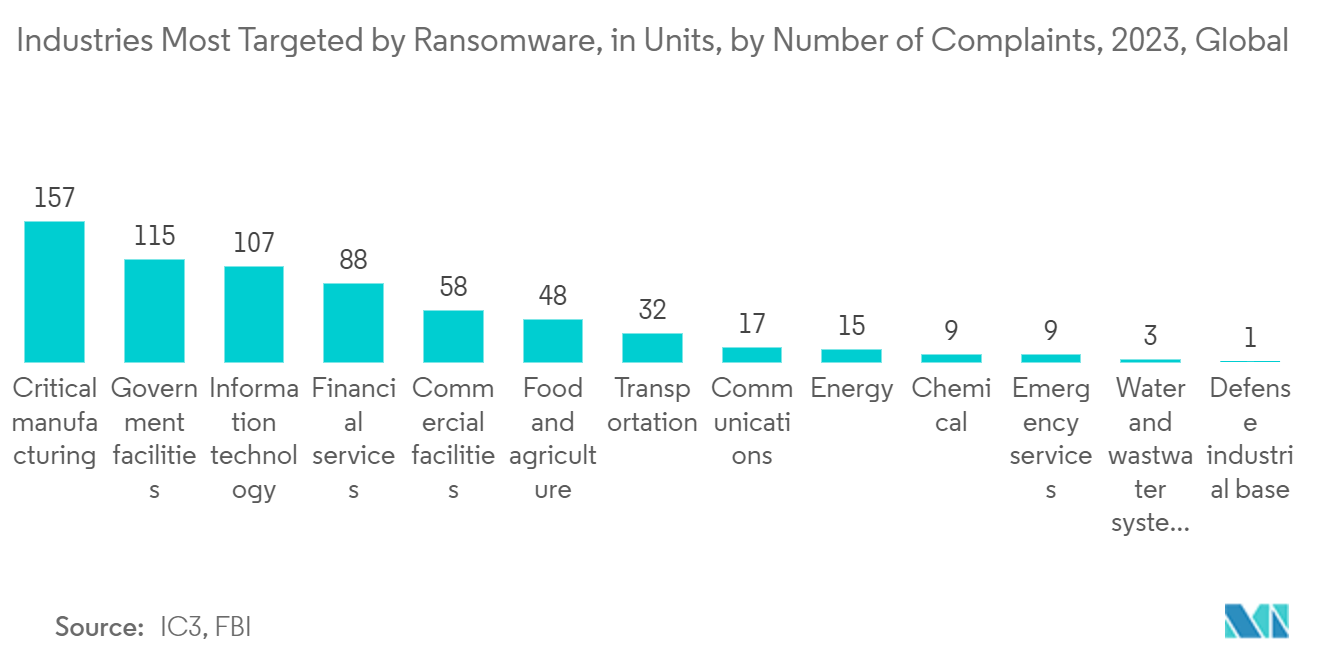
North America is Expected to Hold Significant Market Share
- Data exfiltration is a significant concern in North America. North America houses many organizations across various industries, making it an attractive target for cybercriminals seeking to steal sensitive data for financial gain, espionage, or other malicious purposes.
- North America has seen the emergence of numerous cybercriminal groups, both domestic and international, engaged in data exfiltration activities. These groups may have different motivations, such as financial gain, political agendas, or state-sponsored espionage. They use sophisticated techniques, tools, and tactics to defy security defenses and steal data.
- North American countries like the United States and Canada have established regulatory frameworks to protect sensitive data. For instance, in the United States, organizations are subject to various industry-specific regulations, including HIPAA (Health Insurance Portability and Accountability Act) for healthcare and the Gramm-Leach-Bliley Act (GLBA) for financial institutions. Compliance with these regulations helps organizations implement security measures to mitigate data exfiltration risks.
- Organizations in North America implement a range of security measures to protect against data exfiltration. These include implementing robust firewalls, intrusion detection and prevention systems, endpoint protection, encryption technologies, access controls, employee training, awareness programs, incident response plans, and continuous monitoring for early detection of exfiltration attempts.
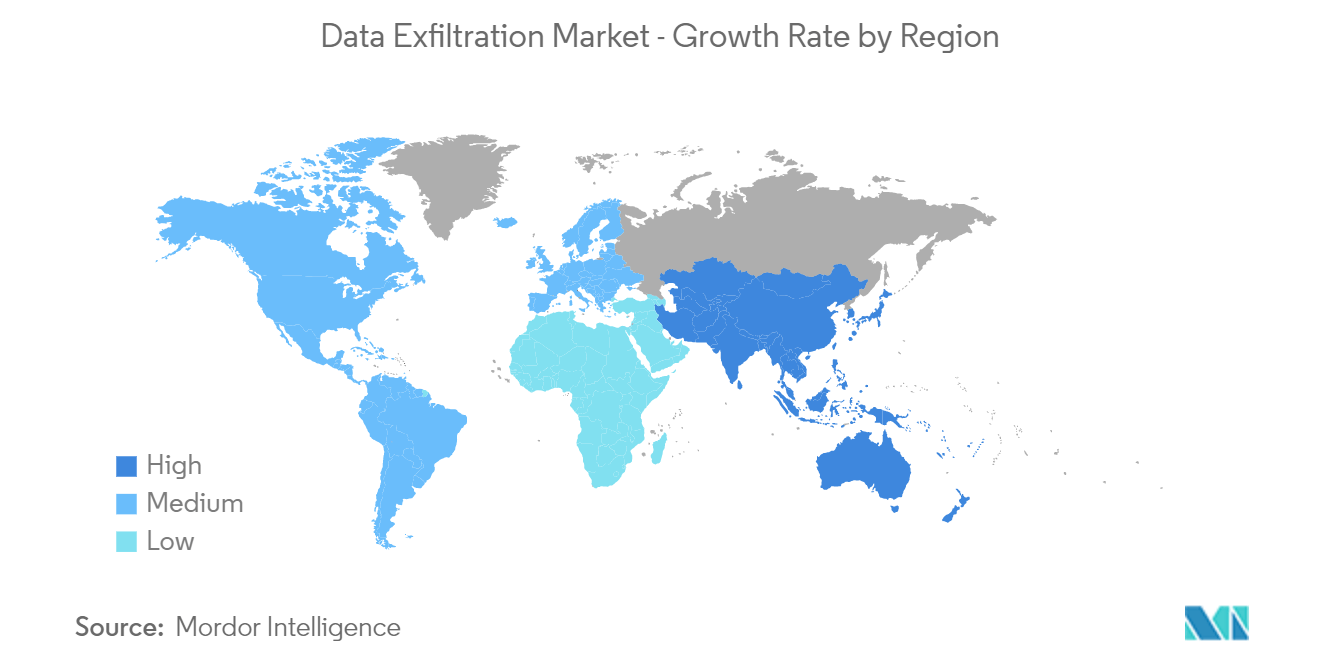
Competitive Landscape
The Data Exfiltration Market is highly fragmented, with major players like Norton LifeLock, McAfee LLC, Palo Alto Networks, Google LLC, and Fortinet. Players in the market are adopting strategies such as partnerships and acquisitions to enhance their product offerings and gain sustainable competitive advantage.
In October 2022, Fortinet offered networking and security convergence to remote users. FortiSASE now includes a next-generation dual-mode CASB, providing extensive visibility and control for SaaS applications. FortiSASE provides comprehensive visibility into sanctioned and unsanctioned apps by employing inline and API-based capabilities to handle shadow IT and data exfiltration challenges.
In September 2022, McAfee Corp., one of the global pioneers in online protection, announced the launch of McAfee+ in Australia, a new product line including all-new privacy and identity safeguards that enabled users to live their lives online safely and securely.
Data Exfiltration Industry Leaders
-
NortonLifeLock
-
McAfee LLC
-
Palo Alto Networks
-
Google LLC
-
Fortinet
- *Disclaimer: Major Players sorted in no particular order
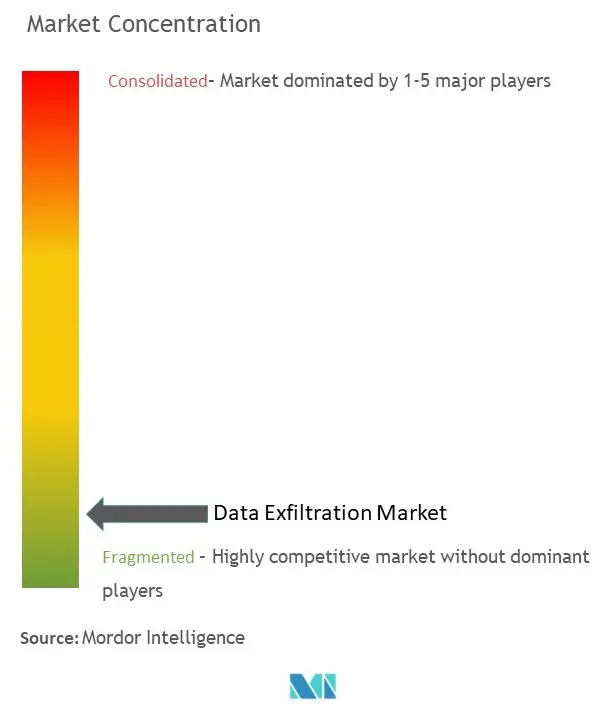
Recent Industry Developments
- January 2023: EfficientIP, the DDI security and automation specialist (DNS, DHCP, IPAM), announced the availability of its new DNS-based Data Exfiltration Application to partners and organizations for free. The program is intended to be a hands-on online tool that allows enterprises to conduct their own 'ethical hack' on their DNS system and related security defenses to uncover potential network weaknesses that might lead to a data breach.
- August 2022: Code42 Software, Inc., one of the leaders in Insider Risk Management (IRM), announced a collaboration with Nullafi, one of the leaders in real-time sensitive data detection and protection, to limit access to regulated data - financial, healthcare, Personally Identifiable Information (PII), or other sensitive data that insiders may accidentally or maliciously expose. With the Nullafi Partnership, Code42 Incydr restricted insider access and prevented data exfiltration of PII, regulated, and sensitive data.
Global Data Exfiltration Market Report Scope
Data exfiltration refers to an instance where the user extracts data from secured systems through physical access or malware over a network and shares it with third parties or moves it to insecure systems. The authorized users include employees and administrations as the result of an intentional attempt or accidentally compromised.
The Data Exfiltration Market is Segmented by Organization Size (Small and Medium-sized Enterprises (SMEs), Large enterprises), by Component (Solutions, Services), by End-user Verticals (Banking, Financial Services, and Insurance (BFSI), IT and Telecom, Healthcare and Life Sciences, Government and Defense, Retail and E-commerce, Manufacturing), Geography (North America (United States, Canada), Europe (Germany, United Kingdom, France, Rest of Europe), Asia-Pacific (India, China, Japan, Rest of Asia-Pacific), Latin America (Brazil, Argentina, Rest of Latin America), Middle East and Africa (United Arab Emirates, Saudi Arabia, Rest of Middle East and Africa). The market sizes and forecasts are provided in terms of value in USD for all the above segments.
| Small- and Medium-sized Enterprises (SMEs) |
| Large Enterprise |
| Solutions (Encryption, Antivirus, Firewall, Intrusion Detection System, Data Loss Prevention and Other Solutions) |
| Services (Penetration Testing Services, Support and Maintenance, Integration Services, Support and Maintenance, and Consulting Services) |
| Banking, Financial Services, and Insurance (BFSI) |
| IT and Telecom |
| Healthcare and Life Sciences |
| Government and Defense |
| Retail and E-commerce |
| Manufacturing |
| Other End-user Verticals |
| North America | United States |
| Canada | |
| Europe | Germany |
| United Kingdom | |
| France | |
| Rest of Europe | |
| Asia-Pacific | India |
| China | |
| Japan | |
| Rest of Asia-Pacific | |
| Latin America | Brazil |
| Argentina | |
| Rest of Latin America | |
| Middle-East and Africa | United Arab Emirates |
| Saudi Arabia | |
| Rest of Middle-East and Africa |
| By Organization Size | Small- and Medium-sized Enterprises (SMEs) | |
| Large Enterprise | ||
| By Component | Solutions (Encryption, Antivirus, Firewall, Intrusion Detection System, Data Loss Prevention and Other Solutions) | |
| Services (Penetration Testing Services, Support and Maintenance, Integration Services, Support and Maintenance, and Consulting Services) | ||
| By End-user Vertical | Banking, Financial Services, and Insurance (BFSI) | |
| IT and Telecom | ||
| Healthcare and Life Sciences | ||
| Government and Defense | ||
| Retail and E-commerce | ||
| Manufacturing | ||
| Other End-user Verticals | ||
| By Geography | North America | United States |
| Canada | ||
| Europe | Germany | |
| United Kingdom | ||
| France | ||
| Rest of Europe | ||
| Asia-Pacific | India | |
| China | ||
| Japan | ||
| Rest of Asia-Pacific | ||
| Latin America | Brazil | |
| Argentina | ||
| Rest of Latin America | ||
| Middle-East and Africa | United Arab Emirates | |
| Saudi Arabia | ||
| Rest of Middle-East and Africa | ||
Key Questions Answered in the Report
How big is the Data Exfiltration Market?
The Data Exfiltration Market size is expected to reach USD 96.19 billion in 2025 and grow at a CAGR of 9.38% to reach USD 150.60 billion by 2030.
What is the current Data Exfiltration Market size?
In 2025, the Data Exfiltration Market size is expected to reach USD 96.19 billion.
Who are the key players in Data Exfiltration Market?
NortonLifeLock, McAfee LLC, Palo Alto Networks, Google LLC and Fortinet are the major companies operating in the Data Exfiltration Market.
Which is the fastest growing region in Data Exfiltration Market?
Asia Pacific is estimated to grow at the highest CAGR over the forecast period (2025-2030).
Which region has the biggest share in Data Exfiltration Market?
In 2025, the North America accounts for the largest market share in Data Exfiltration Market.
What years does this Data Exfiltration Market cover, and what was the market size in 2024?
In 2024, the Data Exfiltration Market size was estimated at USD 87.17 billion. The report covers the Data Exfiltration Market historical market size for years: 2019, 2020, 2021, 2022, 2023 and 2024. The report also forecasts the Data Exfiltration Market size for years: 2025, 2026, 2027, 2028, 2029 and 2030.
Page last updated on:
Data Exfiltration Market Report
Statistics for the 2025 Data Exfiltration market share, size and revenue growth rate, created by Mordor Intelligence™ Industry Reports. Data Exfiltration analysis includes a market forecast outlook for 2025 to 2030 and historical overview. Get a sample of this industry analysis as a free report PDF download.
